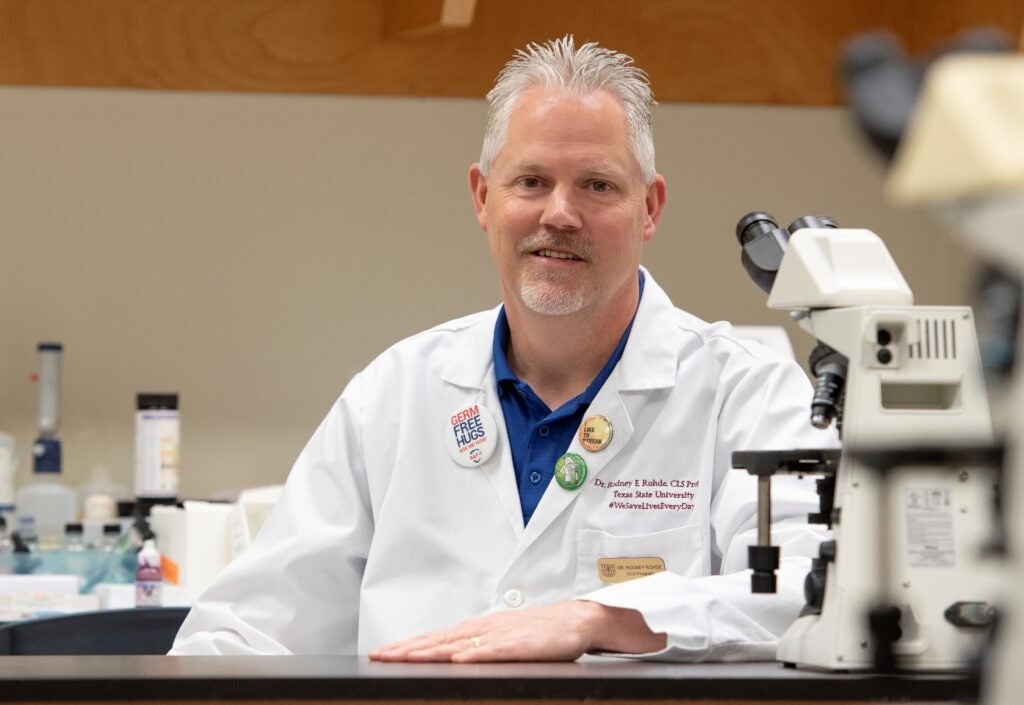With the monkeypox virus continuing to spread across the world, government health agencies in the US and UK are launching randomised clinical trials to further investigate Bavarian Nordic’s smallpox vaccine Jynneos and SIGA Technologies’ antiviral treatment TPOXX (tecovirimat).
These studies will be the first randomised trials investigating both assets as they were approved based on animal studies and healthy participant data. As smallpox was eradicated worldwide and monkeypox usually occurs in Central and West Africa, it was unethical to conduct trials with no immediate emergency and high mortality in Western countries.
“This is a good reminder that if something is based on animal data, it might not be accurate in humans,” explains Dr Rodney Rohde, chair and professor of the Clinical Laboratory Science Program at Texas State University.
The trials are set to initiate within the next month, and the study designs seem appropriate with the given resources. However, different dosing regimens and timeframes need to be explored in the future to fully realise the potential of the smallpox vaccine and antivirals.
Jynneos trial offered to wider population
The National Institute of Allergy and Infectious Diseases (NIAID) will start a randomised Phase II clinical trial (NCT05512949) comparing different doses of the Jynneos vaccine, announced Dr Emily Erbelding, director of NIAID’s microbiology and infectious diseases division last week during a webinar. The trial is likely to start within the next month.
As the vaccine stock is getting lower, NIAID will investigate if one-fifth of the FDA-approved subcutaneous vaccine dosage is as effective when administered as an intradermal dose, which was granted an emergency use authorization (EUA) by the FDA earlier in August. The trial will consist of three arms: the standard dose of two subcutaneous shots administered four weeks apart; two intradermal doses administered four weeks apart; and a single intradermal dose.
How well do you really know your competitors?
Access the most comprehensive Company Profiles on the market, powered by GlobalData. Save hours of research. Gain competitive edge.

Thank you!
Your download email will arrive shortly
Not ready to buy yet? Download a free sample
We are confident about the unique quality of our Company Profiles. However, we want you to make the most beneficial decision for your business, so we offer a free sample that you can download by submitting the below form
By GlobalData
The intradermal layer has more immune cells compared to the subcutaneous, which explains the new administration pathway, Rohde says. One dose is also a good research question to see how long the vaccine can protect. However, researchers should be cautious not to repeat mistakes made during the Covid-19 pandemic.
“We have seen a similar approach with the one-dose Janssen vaccine, which probably saved millions of lives, but it should have been a two-dose vaccine as we saw the immunity vanish after four or five months,” he explains.
As for the trial design, Rohde says there are no major pitfalls as researchers are answering bigger-picture questions. Acknowledging that resources are tight, he adds that exploring longer booster timeframes would also be beneficial.
However, some lessons have been learned since the pandemic. Patients with HIV-positive status, pregnant and breastfeeding individuals, as well as the paediatric population, will not be excluded from the trial. Rohde says it was a smart idea as it is important to gather data from these populations immediately and not wait a few months, something that was seen during the Covid-19 research.
Three TPOXX studies underway
NIAID is also starting two trials in the Democratic Republic of Congo and the US investigating TPOXX. The former will randomise hospitalised patients into treatment or placebo groups in addition to their standard of care. The latter will have three arms: treatment, placebo, and one open-label arm for heavily symptomatic, pregnant, or paediatric populations.
Meanwhile, the UK’s National Institute for Health and Care Research (NIHR) also announced the initiation of the PLATINUM study, led by the Covid-19 RECOVERY trial team. The first patients have already been recruited. The placebo-controlled randomised trial will recruit non-hospitalised patients with monkeypox. The community-based study will randomly allocate 500 participants to a 14-day of 600 mg twice-daily treatment or placebo. All three studies will measure the lesion healing time.
The choice of a non-hospitalised population in the UK study might be explained by low hospitalisation rates as monkeypox tends to resolve within a few weeks by itself, Rohde says. The trial design is good for the initial start, he adds. Different dosing regimens and timeframes should also be explored at some point, but now it’s limited due to resources.
Research led by government and academia
According to GlobalData’s Clinical Trial Database, there are nine ongoing or planned Phase I–IV clinical trials with monkeypox as an indication. Five of those studies were initiated by government institutions, three by academic institutions, and one is planned by a pharma company in Kenya. GlobalData is the parent company of Clinical Trials Arena.
It’s complicated to answer why monkeypox research is led by government and academic institutions, Rohde says. The pharma industry should learn from Covid-19 research when multiple stakeholders conducted various trials. He adds that during the pandemic, “a lot of money opened up and flowed freely for Covid-19 research,” but it’s not happening now, and the government can’t keep “writing checks.”
During the webinar, Dr. Erbelding highlighted the lack of available antiviral treatments and the need to keep identifying new options with different mechanisms of action. Even though monkeypox is a DNA virus that mutates far less compared to the RNA virus responsible for Covid-19, SARS-CoV-2, it shouldn’t be underestimated, Rohde says. “We shouldn’t be in a panic mode, but it is important to be cautious. Hopefully, we don’t sit around and wait in this outbreak,” he adds.







